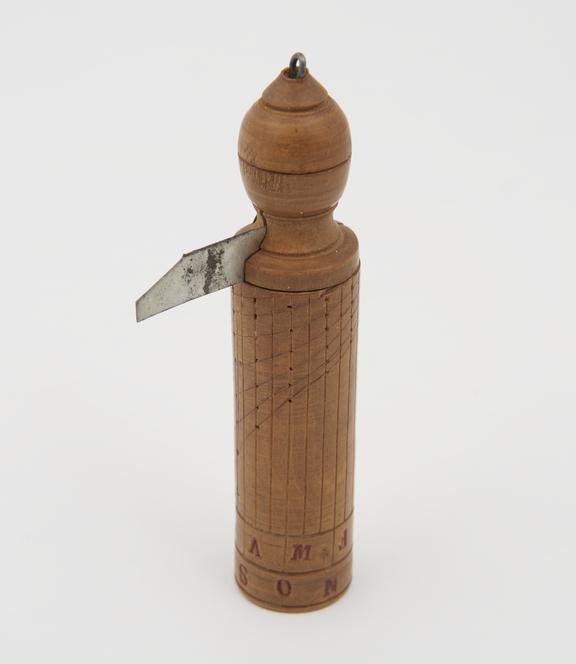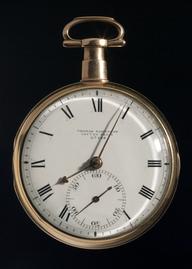


Cylinder sundial or 'Shepherd's dial', for use at latitude 42°. Rough construction. Made in France, 1801-1900 (see note).
Crude sundials of this type were used in the Pyrenees as cheap alternatives to watches until well into the 20th century.They indicate time from the sun's altitude, which is also dependent on the latitude and the season of the year. This instrument is made for a latitude of 42 degrees and it must be set to the correct date by rotating the knob on the top so that the metal gnomon lies immediatley above the symbol for the appropriate month, which is marked along the bottom of the column. To use the sundial, it is positioned so that the shadow of the gnomon falls vertically down the column. The time will then be indicated by the position of the tip of the shadow relative to the curved hour lines which are marked on the column. Altitude sundials give ambiguous results as the instrument is unable to differentiate between hours before and after noon. The ambiguity is easily resolved if the user is aware that it is morning or afternoon, otherwise a second reading must be taken some time later.
Details
- Category:
- Time Measurement
- Object Number:
- 1934-137
- Materials:
- steel (metal) and wood (unidentified)
- Measurements:
-
overall: 98 mm x 40 mm 20 mm, .025kg
- type:
- altitude sundials
- credit:
- Thomas H. Court




